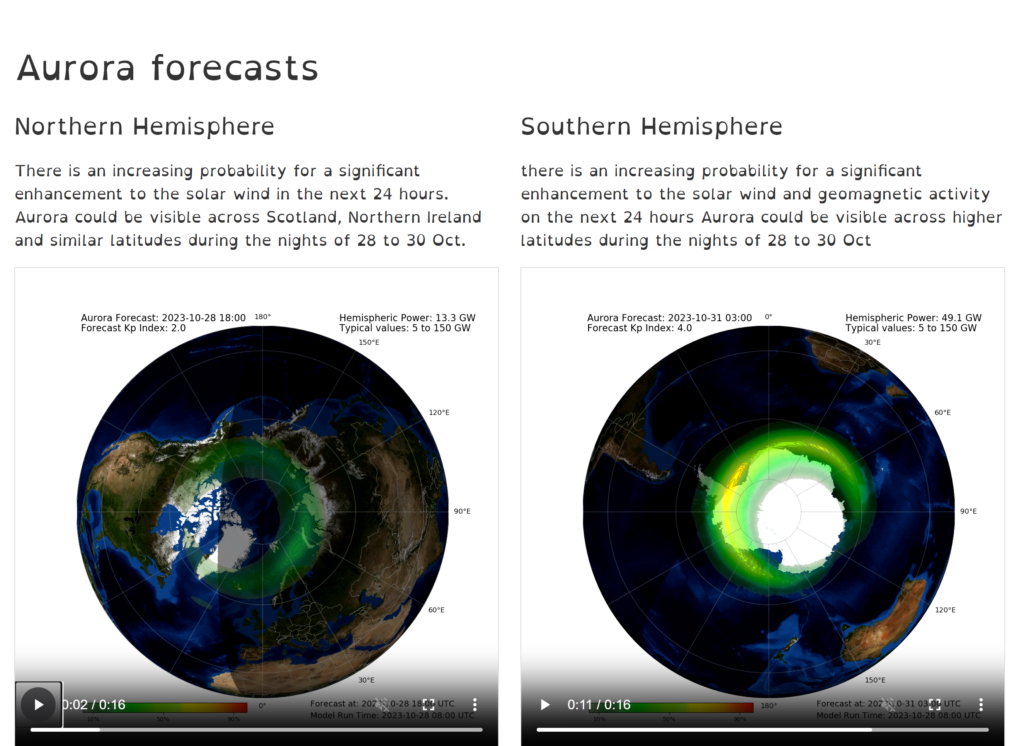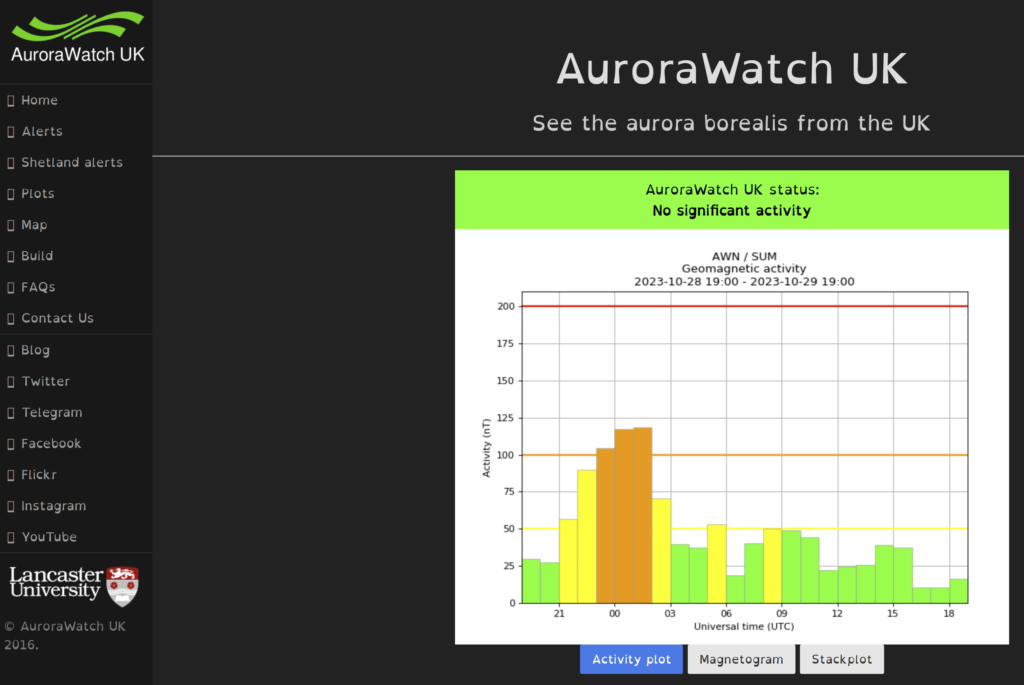Every now and then someone asks me to predict the solar weather. I decline, and point them to two amazing websites which will give you the info you seek.
Space Weather Sites
There are a number of Space Weather sites which will give you a blistering and confusing amount of information about when the Auroral Oval will be down to YOUR latitude.
For the UK, I highly recommend the MET Office website: https://www.metoffice.gov.uk/weather/specialist-forecasts/space-weather
Here you will find the predictions in video format towards the bottom of the page for both Northern and Southern Hemispheres, along with text summarising the likelihood.

“LIVE” Data
During a solar storm, the magnetosphere above Earth is excited by the solar wind hitting the atmosphere. This is what causes Aurora. See the Royal Museums Greenwich website here for a full explanation: https://www.rmg.co.uk/stories/topics/what-causes-northern-lights-aurora-borealis-explained
Luckily, the detectors that the Lancashire University setup a few years ago are still active. They give a “LIVE” view of the current geomagnetic activity in 3 handy graphs.
You can see the graphs here: https://aurorawatch.lancs.ac.uk/

The higher the peak, the more likely you are to see Aurora. However, bear in mind that the conditions change minute by minute. If it was Red earlier today, you might be lucky! It will also depend heavily on how far North you are located. The further North, the more likely you will see Aurora. However, as it notes on the RMG website:
The further north you are the more likely you are to see the display, but in the past the northern lights have been seen as far south as Cornwall and Kent.
Happy Aurora Hunting!
